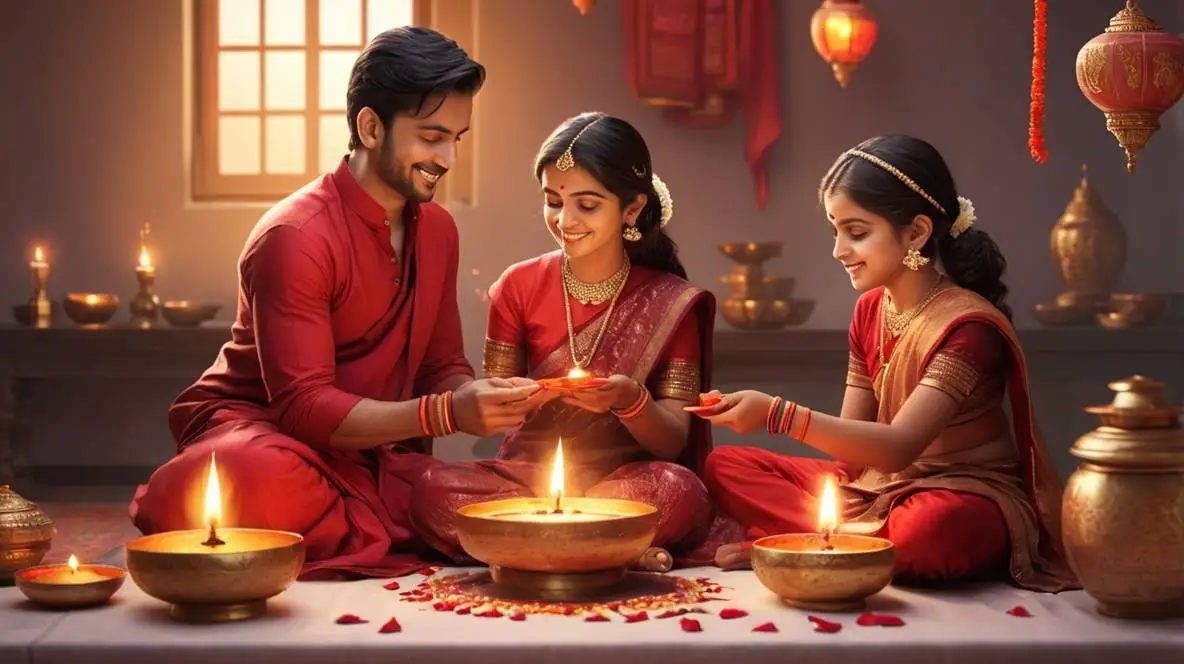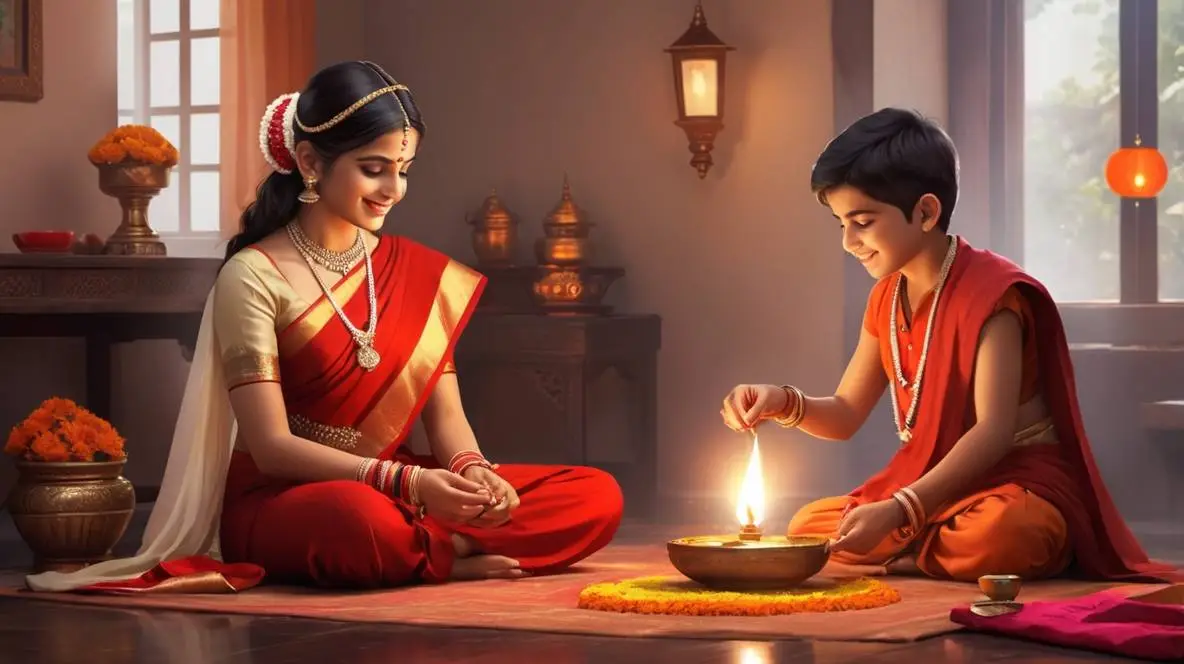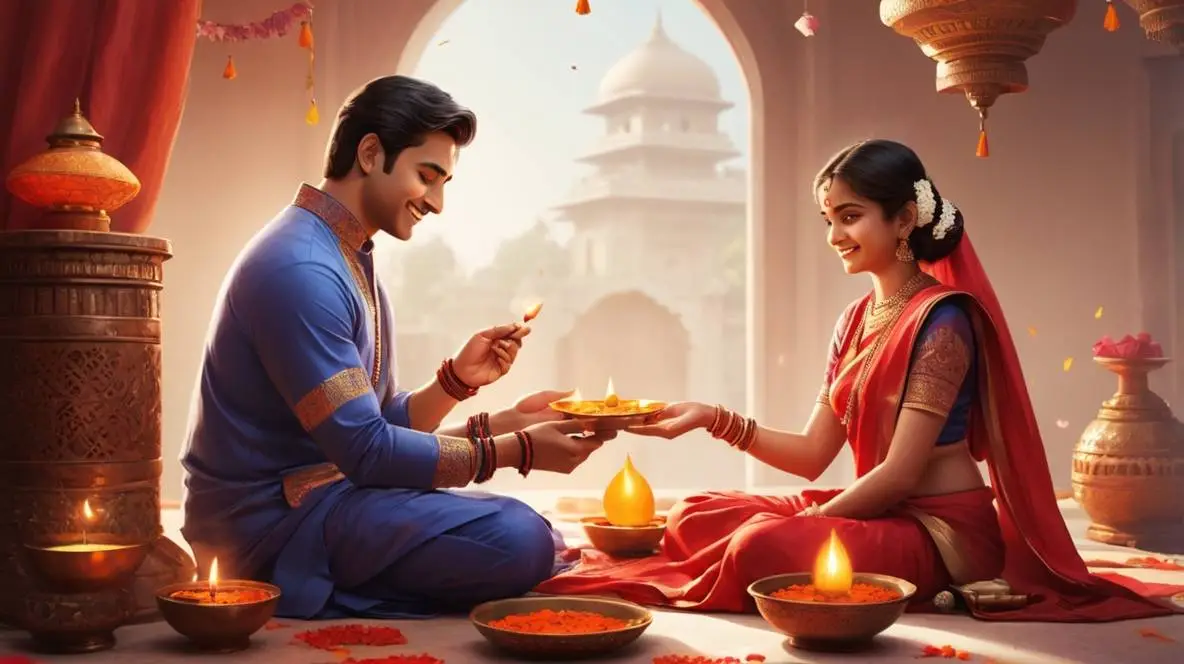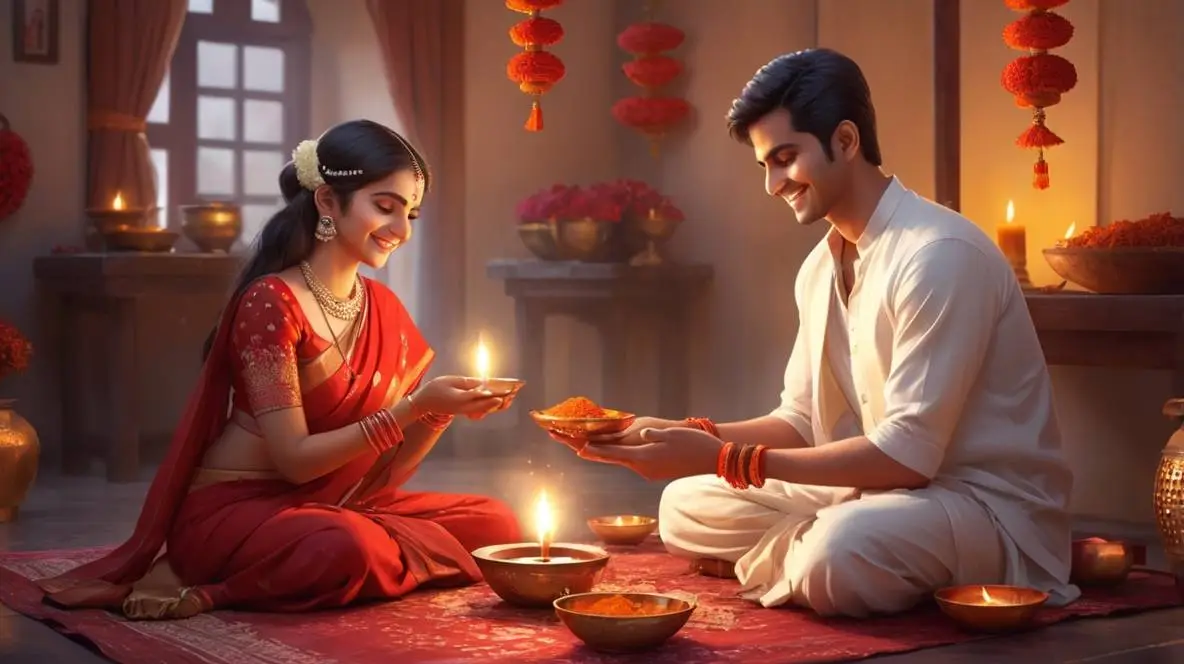Bhai Dooj
Bhai Dooj: Celebrating the Bond Between Brothers and Sisters
Bhai Dooj is one of the most beloved festivals in the Hindu tradition, celebrating the profound and sacred relationship between brothers and sisters. Occurring on the second day of the Shukla Paksha (bright fortnight) in the month of Kartika, Bhai Dooj typically falls in late October or early to mid-November. The festival is celebrated with immense joy, devotion, and heartfelt rituals, and is observed with various names across regions, including Bhai Phonta, Bhau Beej, and Bhai Tika.
In 2025, Bhai Dooj will be celebrated on Thursday, 23 October, making it an ideal time to reflect on the significance of this festival and its beautiful customs. In this article, we will explore the history, rituals, and regional variations of Bhai Dooj, as well as provide insights into the special day’s significance in Hindu culture.

What is Bhai Dooj?
Bhai Dooj is a festival that emphasizes the unconditional love and deep affection shared between brothers and sisters. Much like Raksha Bandhan, which also celebrates sibling bonds, Bhai Dooj includes similar sentiments of care and protection. On this day, sisters pray for the long life and well-being of their brothers, while brothers, in return, promise to protect and support their sisters throughout their lives.
While the festival is celebrated during the vibrant and festive period of Diwali, Bhai Dooj holds its own special place, reinforcing family bonds in a way that is both spiritual and familial.
Bhai Dooj Date and Time (Muhurat) in 2024
In 2024, Bhai Dooj will fall on Sunday, November 3, with the Aparahna Muhurat occurring from 1:10 PM to 3:22 PM. The Dwitiya Tithi will begin at 8:21 PM on November 2 and end at 10:05 PM on November 3. This time frame is considered most auspicious for performing the Bhai Dooj rituals. Sisters will fast before performing the ceremony, eagerly awaiting the moment when they can bless their brothers with the traditional tilak.
The Legend Behind Bhai Dooj
There are several fascinating legends that explain the origins of Bhai Dooj. Two of the most popular ones are:
The Legend of Lord Krishna and Subhadra
One of the oldest legends surrounding Bhai Dooj involves Lord Krishna and his sister Subhadra. After Krishna’s victory over the demon Narakasura, he returned to his home where his sister Subhadra welcomed him with flowers, sweets, and a tilak. This warm welcome is said to be the origin of Bhai Dooj, symbolizing the bond of protection and love between siblings.
The Story of Yama and Yamuna
Another popular legend traces the origins of Bhai Dooj to Yama, the God of Death, and his sister Yamuna. According to the story, Yamuna invited Yama to her home, and in gratitude for the grand welcome and prayers for his well-being, Yama declared that any brother who receives such a reception from his sister on this day would be blessed with a long and prosperous life. This ritual eventually became known as Yamadvitiya or Yama Dwitiya, the other name for Bhai Dooj.

Regional Celebrations of Bhai Dooj
Bhai Dooj in Northern India
In Northern India, Bhai Dooj is celebrated with the application of a red tilak on the forehead of brothers. Sisters perform an aarti and offer prayers for their brothers’ well-being, while brothers reciprocate by giving gifts and sweets to their sisters. In states like Bihar and Uttar Pradesh, it is commonly called Bhaiya Dooj.
Bhai Tika in Nepal
In Nepal, Bhai Dooj is celebrated as Bhai Tika during the Tihar Festival. The Nepali version involves sisters applying a colorful, seven-colored tilak known as Saptarangi Tika to their brothers’ foreheads. This is a significant ritual, especially for the Newar community, who also perform Kija Puja, similar to Bhai Dooj.

Bhai Phonta in Bengal
In Bengal and Tripura, the festival is known as Bhai Phonta. Celebrated the day after Kali Puja, sisters mark their brothers’ foreheads with a mixture of sandalwood paste or kohl and perform aarti. Families also come together to enjoy festive meals and exchange gifts.
Bhau Beej in Maharashtra and Gujarat
In Maharashtra, Goa, and Gujarat, the festival is called Bhau Beej or Bhav Bij. Sisters prepare a grand feast for their brothers and participate in a variety of rituals to honor the sibling bond. Some regions also observe a symbolic worship of the moon for those sisters who do not have brothers.
Bhai Jiuntia in Odisha
In Odisha, the festival is known as Bhai Jiuntia, where the rituals are similar to the rest of the country, emphasizing the deep emotional connection between siblings.

Rituals and Traditions of Bhai Dooj
Sister’s Fast
The primary ritual of Bhai Dooj begins with the sister fasting for the well-being of her brother. This fast is observed out of love and devotion, and in some households, the brother also participates in the fast. The fast is broken after the ceremony when the brother feeds his sister sweets.
Tilak Ceremony
A sacred tilak is applied on the brother’s forehead by the sister. The tilak is made of vermilion, rice, and sandalwood paste. During this, the sister chants mantras specific to her region, which invoke blessings of protection and longevity for her brother.
Aarti and Blessings
After the tilak, the sister performs an aarti using a diya (lamp) to invoke divine blessings for her brother’s happiness and prosperity. This ritual is believed to protect the brother from evil spirits and misfortunes.
Gift Exchange
Following the aarti, the brother gifts his sister tokens of appreciation—often clothes, sweets, or other meaningful presents. This exchange signifies mutual love and respect.
Feasting Together
A grand meal is often prepared, and the brother and sister share it together. The meal is an expression of love and celebration, enhancing the bond between them.
Bhai Dooj is a festival that captures the essence of sibling relationships, built on love, respect, and protection. From its mythological origins to its modern-day celebrations, the festival brings families together in a spirit of joy and togetherness. Whether celebrated as Bhai Phonta in Bengal, Bhai Tika in Nepal, or Bhau Beej in Maharashtra, the rituals are a testament to the special bond shared between brothers and sisters.
Frequently Asked Questions (FAQs)
1. What is the significance of Bhai Dooj? Bhai Dooj celebrates the sacred bond between brothers and sisters, with rituals that express love, protection, and prayers for long life and prosperity.
2. When is Bhai Dooj in 2025? In 2025, Bhai Dooj will be celebrated on Thursday, 23 October.
3. What are the common rituals of Bhai Dooj? The common rituals include applying a tilak on the brother’s forehead, performing an aarti, exchanging gifts, and sharing sweets and meals.
4. How is Bhai Dooj celebrated in different regions? Bhai Dooj is celebrated under different names like Bhai Phonta, Bhai Tika, and Bhau Beej, with each region having its own specific rituals and customs.
5. Can sisters fast on Bhai Dooj? Yes, sisters often fast as a sign of devotion and love for their brothers, with the fast being broken after the completion of the rituals.


